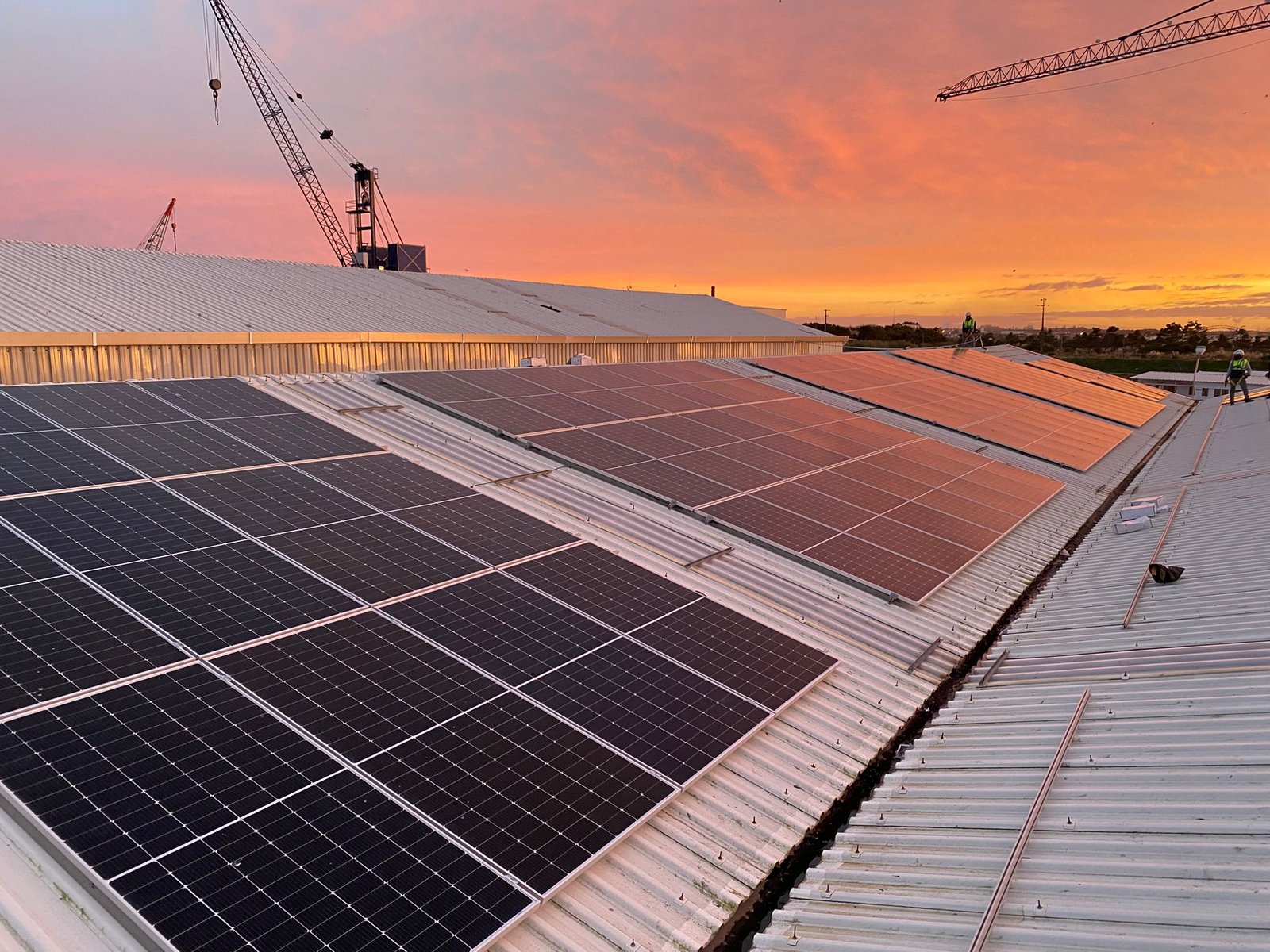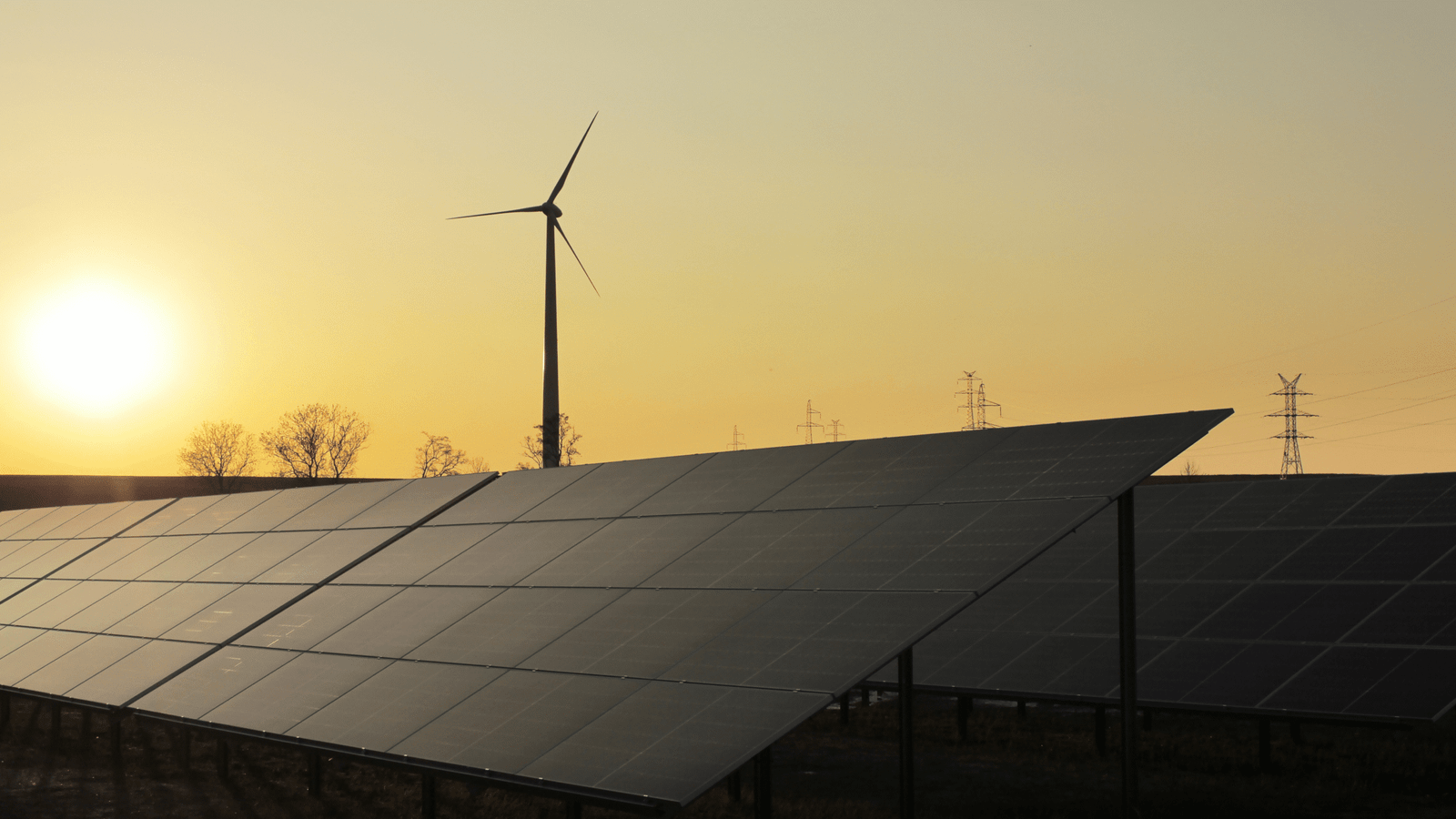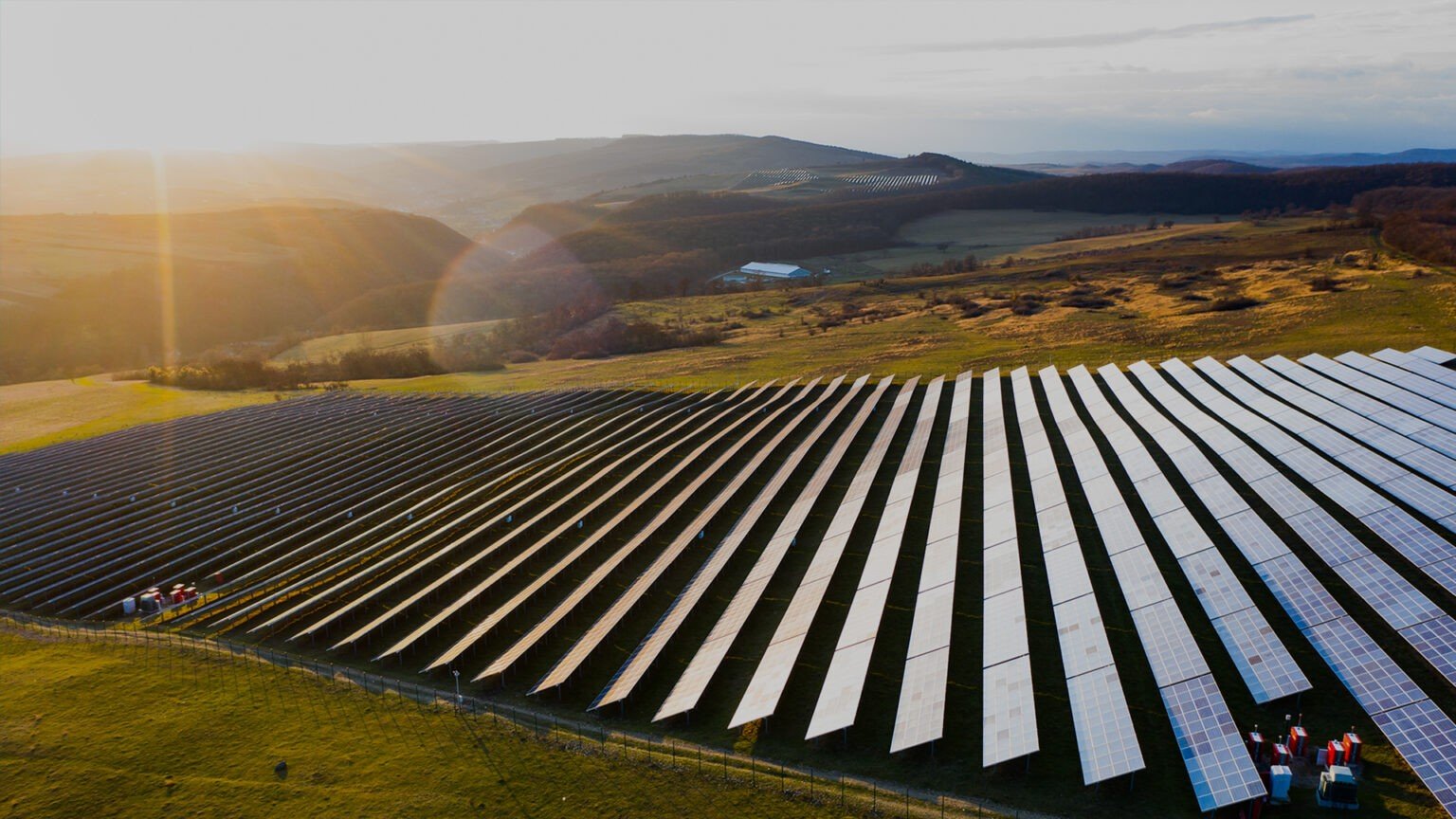A solar eclipse has always captured the imagination of humanity. It is one of nature’s most dramatic astronomical events—an alignment so precise that for a few minutes, the Sun, Moon, and Earth line up in a perfect cosmic choreography. While people gather to witness the rare moment when daylight dims and shadows sharpen, industries powered by solar energy often find themselves asking a very compelling question:
What does a solar eclipse mean for solar power generation?
For a solar company like Soleos Energy, which has spent over a decade helping industries embrace sustainable energy through EPC excellence, the solar eclipse is more than a spectacle. It is a reminder of the Sun’s immense power, the precision of natural cycles, and the importance of innovation in ensuring energy resilience—even during the moments when the Sun goes dark.
Table of Contents
Understanding the Solar Eclipse
A solar eclipse serves as a demonstration of the alignment of the Sun, Moon, and Earth, offering valuable insights for the solar industry, particularly utility-scale and C&I solar plants. During an eclipse, sunlight diminishes significantly, leading to a drop in energy generation from solar PV modules. This decrease can stress energy grids reliant on renewable sources, highlighting the necessity for effective energy management and storage solutions to maintain stability during such events. The occurrence emphasizes the importance of understanding system resilience and design intelligence in solar energy operations.
1. Why Solar Eclipses Occur
1. Astronomical Alignment and Its Effect on Irradiance
A solar eclipse occurs when the Moon aligns between the Sun and Earth, effectively obstructing some or all sunlight. For solar power plants, this alignment causes a predictable reduction in solar irradiance, directly impacting power output. The level of reduction is contingent upon the extent of the Sun being obscured during the eclipse, whether it is total or partial. This phenomenon, termed syzygy, only occurs during the new moon phase when the Moon is precisely positioned in front of the Sun from the Earth’s viewpoint.
The eclipse generates two shadow areas: the umbra, where total darkness results in negligible sunlight, and the penumbra, which creates partial shadow, thus lowering sunlight intensity. The geographical location of solar power plants determines their exposure to these shadow zones during an eclipse.
2. Rapid Changes: Drop & Recovery
Plants must effectively manage two critical scenarios during a solar eclipse: the rapid decrease in sunlight as the eclipse begins and the swift recovery of sunlight once the eclipse ends. This dual challenge assesses the responsiveness and stability of inverters and plant controllers. Unlike the gradual changes in irradiance experienced during typical sunrise or sunset, an eclipse causes an abrupt decline in sunlight followed by a quick rebound. The National Renewable Energy Laboratory (NREL) notes that the “ramp rate” during an eclipse can be 2–3 times greater than normal rates, posing significant challenges for inverters, plant controllers, and grid systems to respond effectively to these rapid fluctuations in generation capacity.
3. Impact on the Grid & Load-Generation Balance
When solar generation experiences a significant decline, the load–generation balance (LGB) within the electrical grid is disrupted. To manage this disruption, grid operators adjust by increasing output from alternative energy sources, such as gas or hydro, to compensate for the decrease in solar power. Improper management of this situation may result in voltage fluctuations at pooling substations, highlighting the importance of effective planning and control systems in grid management.
4. Performance and Stress on Solar Equipment
The text discusses the potential stress on a plant’s electronics due to sudden fluctuations in irradiance levels. It mentions that these rapid changes can lead to risks such as over-generation or mechanical stress on the system. The document also notes that in rare or extreme situations, excessively high irradiance following an eclipse could pose challenges to the system’s design, especially if appropriate safeguards are not in place.
5. Predictability vs Variability
Solar eclipses are unique among grid-disrupting events due to their high predictability, enabling operators to forecast the timing and extent of solar generation declines accurately. This predictability facilitates planned reserve dispatch, proactive balancing, and coordinated actions within the grid. Consequently, grid planners regard eclipses as a “stress test” for the system, suggesting that if the grid can effectively manage the challenges posed by an eclipse, it is likely better equipped to handle other variations in energy supply and demand.
6. Role of Energy Storage
To address the reduction in solar output, the importance of battery storage systems is highlighted. These systems allow for the discharge of stored energy during eclipses to support the power grid. Following such events, the storage can absorb rapid surges or aid in stabilizing voltage levels. This scenario underscores the growing value of hybrid architectures, which combine solar power with storage solutions, enhancing the resilience of solar generation systems against transient yet predictable disturbances.
7. Real-World Impacts Demonstrated
In India, a solar eclipse resulted in a significant decrease in solar power generation, prompting careful management of grid variability. Similarly, during the 2017 solar eclipse in the United States, the National Renewable Energy Laboratory (NREL) noted a drop of approximately 5.9 GW in photovoltaic (PV) output. However, the grid maintained stability by utilizing flexible backup power sources. Recent modeling studies indicate that even with a reduction of 70–90% in certain regions, other generation sources successfully compensated for the loss without leading to blackouts.
The Three Main Types of Solar Eclipses
1. Total Solar Eclipse
A total solar eclipse occurs when the Moon entirely obscures the Sun, creating a complete shadow (umbra) on certain areas of Earth. This phenomenon significantly impacts solar power plants, as solar irradiance can plummet to nearly zero during the peak of totality. Consequently, a plant that typically operates at full capacity may experience a drastic reduction in output, potentially falling to almost 0%.
Inverters in solar power systems are subjected to rapid drop and recovery cycles, which challenge their ramp-rate limits, voltage stability, and overall control responsiveness. The operational implications of a total eclipse necessitate considerable advance coordination with grid operators, as real-time SCADA analytics are essential for monitoring performance during these events. If energy storage systems are available, they may help mitigate the dip in output.
Given the dramatic nature of a total solar eclipse, it is crucial for solar plants to prepare for the rapid fluctuations in energy generation, ensuring effective ramp-rate management and precise communication with grid management to maintain stability during such occurrences.
2. Partial Solar Eclipse
The Sun, Moon, and Earth are not perfectly aligned during a partial eclipse, resulting in only a portion of the Sun being obscured by the Moon. This partial coverage affects solar power plants, as the irradiance decreases in relation to the extent of the eclipse. Consequently, power output fluctuates rather than ceasing entirely, necessitating careful management by plant controllers. For instance, a 60% partial eclipse can lead to a 40–70% reduction in photovoltaic (PV) output, creating significant variability.
Operationally, while inverters remain active, the output becomes unstable, prompting the plant power controller (PPC) to regulate production to prevent disturbances in the grid. These fluctuations can occur over a few minutes, highlighting the need for smooth power balancing. Given that partial eclipses are frequent globally, they represent a critical scenario for solar forecasting models.
3. Annular Solar Eclipse
An annular eclipse occurs when the Moon is farther from Earth, causing it to appear smaller than the Sun, resulting in a “Ring of Fire” where the Sun is mostly blocked but a bright ring remains visible. This phenomenon significantly impacts solar power plants, with irradiance dropping by 70-90%, though total darkness is not achieved. Power generation declines sharply but remains positive, and recovery after the eclipse is rapid, challenging inverter stability. The effects are similar to those of partial eclipses but with greater irradiance dips, necessitating adjustments in forecasting to manage the ramp-up post-eclipse. Additionally, this event serves as a valuable opportunity to validate the performance of solar modules under low-light conditions.

3. How Often Does a Solar Eclipse Occur?
1. Global Frequency: In a typical year, there are between 2 to 3 solar eclipses, with a minimum of 2 and a maximum of 5, the latter being a rare occurrence. The number of solar eclipses depends on the alignment of the Moon’s orbit with that of Earth.
2. Why the Number Varies: The Moon’s orbit is tilted approximately 5° relative to Earth’s orbital plane, resulting in new moons not always aligning for an eclipse. Eclipse seasons occur biannually, marking the only periods when the alignment facilitates eclipses.
3. How Often Total Solar Eclipses Happen (Somewhere on Earth): A total solar eclipse, in which the Moon completely obscures the Sun, occurs approximately every 18 months on average somewhere on Earth. NASA indicates that, over a span of 5,000 years, total eclipses constitute a notable portion of all eclipses.
4. How Rare They Are for a Single Location: For any given location on Earth, total solar eclipses are infrequent events, occurring approximately once every 350 to 380 years. However, regions closer to the equator may experience solar eclipses of any variety more frequently, at an average rate of about once every 2.6 years.
The Historical Significance of Solar Eclipses
Solar eclipses have shaped mythology, science, and human understanding for thousands of years.
1. From Ancient Wonder to Modern Engineering Challenge
For centuries, solar eclipses were viewed through myth and astronomy. But as solar power became a major contributor to global energy systems, eclipses transformed into predictable yet powerful events that reveal how well solar plants and grids can manage sudden drops in irradiance. They act as a natural demonstration of the Sun’s influence—highlighting solar energy’s strengths, and showing exactly how advanced our technology has become.
2. Milestone for Solar Grid Reliability
Europe’s Eclipse Milestone (2015)
As solar capacity surged across Europe, this eclipse tested the continent’s interconnected grid. Germany, with one of the highest solar penetrations in the world, saw a steep generation dip and rapid recovery.
Grid operators managed the event successfully, proving that large-scale solar and stable grids can coexist—an important message for growing solar markets like India and the Middle East.
The U.S. Total Solar Eclipse (2017)
This solar-energy event was significant, witnessing a temporary drop of over 5,000 MW of solar output. Despite this fluctuation, grid stability was effectively upheld. Operators utilized advanced forecasting techniques and strategic dispatch methods to manage the situation. The event has since turned into a global case study, showcasing the capability of high-solar grids in responding to rapid changes in energy output.
India’s Solar Eclipse Lessons
In India, where solar capacity is expanding rapidly, eclipses have helped SLDCs refine load management strategies. A recent event caused a steep drop of nearly 12 GW, yet the grid absorbed the dip without disruption—showcasing how modern solar planning and forecasting are strengthening national energy resilience.
3. What Eclipses Teach Us About Solar Plant Performance
Solar eclipses serve as key opportunities for solar engineers to conduct live experiments that yield valuable insights into various aspects of photovoltaic (PV) generation. They help engineers assess the speed at which solar generation decreases and subsequently increases, evaluate how inverters react to sudden changes in irradiance, and determine the effectiveness of energy storage in stabilizing brief fluctuations in power supply. Additionally, these phenomena provide critical data on how grid operators collaborate with solar plants during abrupt transitions. The knowledge gained from these experiments has a direct impact on advancing the design of solar engineering, procurement, and construction (EPC), supervisory control and data acquisition (SCADA) systems, string-level monitoring, and overall plant-level control strategies.
4. Strengthening Solar Reliability Through Data
Very eclipses produce high-precision data that is invaluable for understanding plant behavior, which is utilized by solar researchers and grid planners. This data contributes to improving forecast algorithms, building more resilient solar parks, enhancing inverter ramp-rate limits, optimizing battery integration, and strengthening communication between grid authorities and solar developers. Consequently, eclipses serve as an unexpected but significant catalyst for innovation in the solar energy sector.
5. A Symbol of Progress in Solar Energy
Historically viewed as symbols of uncertainty, eclipses have transformed into representations of confidence in the contemporary context of solar energy. The capability of extensive solar-powered grids to manage significant and predictable declines in energy generation without causing instability illustrates the progress made within the industry. For decision-makers in manufacturing and industrial sectors, this evolution conveys an essential message: solar energy not only outperforms its environmental counterparts but also boasts operational robustness, technological advancement, and preparedness for large-scale industrial implementation.

Solar Eclipses & Solar Energy Systems: The Practical Intersection
1. Predictable, Yet Powerful Impact on Solar Generation
During a solar eclipse, the rapid decrease and subsequent rise in sunlight provide a unique opportunity for solar power plants to conduct controlled tests. Operators can evaluate output fluctuations, inverter stability, panel temperature changes, and the ramp-down and ramp-up behaviors of photovoltaic (PV) systems. This natural phenomenon offers a testing scenario that is difficult to replicate in laboratory settings. For instance, analysis from the National Renewable Energy Laboratory (NREL) showed that during the 2017 U.S. eclipse, PV systems experienced a significant drop, losing nearly 5.9 GW of generation within minutes. This decrease in irradiance is predictable through precise astronomical modeling, enabling grid operators and PV plant managers to proactively manage the impact on energy generation.
2. Grid Stability Under Stress Test
Eclipses temporarily reduce photovoltaic (PV) generation across extensive regions, presenting challenges for grid operators in balancing demand and supply, particularly in areas with significant solar energy penetration. These events provide opportunities to enhance load forecasting, frequency management, grid communication protocols, and backup power dispatch strategies, effectively serving as a training ground for developing a smarter and more flexible electrical grid. Eclipses function as natural stress tests for the grid, as the decline in solar generation necessitates a rapid increase in other energy sources, such as gas and hydro, to maintain system balance.
The 2017 eclipse exemplified this challenge, with considerable drops in solar generation managed successfully without blackouts, due to the coordinated dispatch of flexible resources. Notably, the ramping of energy sources during the eclipse occurred at rates 2–3 times faster than the typical changes experienced at dawn or dusk in some grid regions, underscoring the critical need for fast ramping capabilities.
3. Forecasting & Operational Intelligence
Solar forecasting tools integrate weather data and eclipse trajectories to predict minute-by-minute changes in solar energy generation. These forecasts are utilized in plant control systems (PPC/SCADA) for proactive management, including preparation of inverters, mitigation of over-generation risks, and storage deployment. Analyzing eclipse behavior also aids solar operators in refining their predictive models for other extreme but predictable events, such as thick cloud cover and sudden weather changes.
4. Energy Storage Plays a Key Role
Battery energy storage systems (BESS) serve as a buffer during eclipses by absorbing the dip in solar energy production. After the eclipse, as solar irradiance increases rapidly, these storage systems can manage excess energy or facilitate a smooth return to full generation levels. This capability underscores the significant value of hybrid solar plus storage configurations for enhancing grid resilience, making them beneficial not just during eclipse events but consistently across varying conditions.
5. Risk & Mitigation for Solar Plants
Sudden irradiance recovery can significantly increase incoming radiation levels, potentially overloading photovoltaic (PV) modules and inverters. Additionally, a swift decline in energy generation can cause voltage surges in pooling substations. To address these grid voltage issues, it is essential to implement smart grid stabilizers and reactive power management. Since the occurrence of sudden irradiance recovery is predictable, plant operators are encouraged to create proactive mitigation strategies, which may include: charging and dispatching batteries ahead of time, pre-warming backup grid sources, activating smart-inverter protections, and collaborating with grid operators for efficient resource dispatching.
6. Learning & Innovation Continuous Loop
Every eclipse provides valuable real-world data related to several aspects of solar energy systems. These include assessing photovoltaic (PV) performance during sudden changes in irradiance, evaluating inverter stability during rapid fluctuations in power output (ramp-down/ramp-up), understanding storage behavior in transient situations, and examining the responsiveness of grid operators. The insights gained from these occurrences inform engineering design, improve forecasting models, and enhance operational protocols, ultimately contributing to the development of more robust and future-ready solar systems.
7. Strategic Value for Industrial Solar Investments
For manufacturing units and industrial solar EPCs, the intersection of eclipse and grid operations reveals several strategic considerations. Firstly, resilience is showcased through solar+storage or hybrid systems, which effectively manage extreme but predictable variability. Secondly, forecast-driven design is underscored, highlighting the significance of advanced forecasting and control mechanisms, applicable not only to cloud cover but also to astronomical occurrences. Thirdly, the necessity of a collaborative approach with grid operators and system planners is emphasized. Lastly, a focus on risk management advocates for designing systems that account for edge cases rather than merely average daily generation, ultimately enhancing reliability and fostering trust.

The Engineering Perspective: How Solar EPC Handles Eclipses
1. Forecasting the Eclipse with Scientific Precision
Solar EPC engineers utilize astronomical data to model solar eclipses in advance, focusing on aspects such as the extent of sun coverage, the irradiance reduction profile, and the duration of both partial and total eclipses. They also consider ramp-down and ramp-up curves. This comprehensive forecast is essential for effective power management planning, coordination of inverters, and communication at the grid level.
2. Smart Inverter Control for Smooth Power Transitions
Inverters serve as the critical control systems in solar plants, particularly demonstrating their capabilities during solar eclipses. The Engineering, Procurement, and Construction (EPC) teams configure several key functions: ramp-rate limits to stabilize output fluctuations, reactive power control for voltage support, and adaptive Maximum Power Point Tracking (MPPT) to accommodate variations in irradiance. Additionally, plant-level coordination among all inverter clusters is essential. These configurations work in tandem to prevent disturbances, mitigate tripping risks, and ensure consistent AC output, even in the event of temporary reductions in sunlight.
3. Energy Storage as the Stability Anchor
Battery Energy Storage Systems (BESS) play a crucial role in managing energy supply during periods of reduced sunlight. They discharge energy to maintain supply, support grid frequency, and ensure power continuity for critical loads. When sunlight resumes, BESS absorb excess energy, stabilize fluctuations, and safeguard inverters against overvoltage. This functionality establishes BESS as an essential element in contemporary engineering, procurement, and construction (EPC) design.
4. Grid Coordination for a Balanced Power Ecosystem
Ensuring the stability of power grids is a collective effort involving EPC engineers and utility companies, who address the varying needs brought on by plant operations. Key responsibilities include providing backup generation support, managing real-time reactive power, balancing the grid for extensive solar energy systems, and adhering to grid codes amidst swift changes in conditions. This collaborative approach guarantees consistent operations for manufacturing clients and fortifies the reliability of the electrical infrastructure across regions.
5. Thermal & Electrical Protection for Equipment Safety
An eclipse has distinct effects on plant components compared to regular cloudy weather. To mitigate these effects, EPC teams take several preparatory steps, including designing adequate thermal margins in panels and inverters, implementing protection schemes for overvoltage and overcurrent, and establishing temperature monitoring alongside automated derating systems. These measures aim to ensure the longevity of the system, particularly when irradiance levels sharply increase following totality.
6. SCADA-Based Monitoring & Post-Event Analysis
Eclipses produce valuable operational data that can be monitored through SCADA systems by EPC engineers. Key parameters include voltage and frequency fluctuations, inverter efficiency during ramp-down, battery discharge curves, environmental factors, and dips in irradiance. Post-event analytics are essential for enhancing future plant design, updating predictive models, and improving protocols specific to eclipse operations.
7. Building Long-Term Plant Resilience
Though rare, eclipses provide EPC teams with significant insights into a solar plant’s performance during extreme fluctuations in irradiance. These insights enhance various operational aspects, including weather-based control logic, AI-driven forecasting models, protection coordination, storage utilization strategies, and overall plant robustness. Consequently, preparation for eclipses contributes to a solar plant’s strength and operational efficiency on non-eclipse days throughout the year.
Solar Eclipses & Sustainability Goals of Manufacturing Industries
Solar eclipses are rare cosmic events, but for manufacturing industries committed to sustainability, they serve as powerful reminders of why resilient, intelligently designed solar systems matter. When the Moon briefly blocks the Sun, solar power generation dips rapidly — a natural stress test for renewable energy infrastructure. For energy-intensive manufacturing units that rely on stable, high-quality power to keep production lines running, this momentary shadow highlights the importance of robust solar EPC design, advanced inverters, and integrated energy storage systems.
These technologies ensure that even during sudden drops in sunlight, operations continue smoothly without relying on fossil-fuel backups. This not only strengthens energy reliability but also supports long-term sustainability goals such as carbon reduction, improved energy efficiency, and ESG compliance. By investing in solar-plus-storage and smart energy management, manufacturers demonstrate technological leadership, operational resilience, and a genuine commitment to decarbonization. In essence, a solar eclipse becomes more than an astronomical event — it becomes a symbol of how modern renewable systems can thrive even in the absence of sunlight, reinforcing the credibility, competitiveness, and sustainability vision of forward-thinking industries.
How Soleos Energy Ensures Solar Stability During Eclipses
At Soleos Energy, we engineer solar power plants that remain stable and reliable even during rare events like solar eclipses, where sunlight can drop suddenly and dramatically. Our approach begins with advanced forecasting models that precisely predict eclipse-related irradiance shifts, enabling our teams to prepare the system for smooth ramp-down and ramp-up transitions. We integrate high-efficiency inverters, intelligent plant controllers, and SCADA-driven automation to ensure that voltage, frequency, and power quality remain consistent throughout the event.
To eliminate any risk of power disruption, our solar EPC designs include battery energy storage systems (BESS) that instantly compensate for the temporary loss of solar generation, ensuring uninterrupted power for energy-intensive manufacturing operations. This resilience is strengthened through smart grid coordination, dynamic load management, and robust system protection that can withstand rapid fluctuations without stressing plant components. By combining predictive engineering, real-time monitoring, and storage-backed stability, Soleos Energy guarantees that even when the sun is momentarily hidden, our clients continue to experience clean, stable, and seamless solar power—reinforcing their operational reliability and long-term sustainability goals.
The Future: Do Solar Eclipses Matter for Tomorrow’s Solar Plants?
Solar eclipses, while infrequent, significantly affect solar power generation through abrupt declines in sunlight, historically leading to challenges in grid stability and power reliability. However, advancements in predictive analytics, energy storage, and grid management are transforming these events from risks into opportunities for innovation and improved energy management. Solar plants now utilize sophisticated forecasting tools to predict eclipses, allowing for preemptive energy dispatches and the use of battery storage systems to ensure continuous power supply during such occurrences. Modern infrastructure incorporates smart inverters and grid-tied systems, enhancing adaptability and minimizing operational disruptions. Furthermore, hybrid energy systems and diversified portfolios provide additional resilience, ensuring minimal impact on industrial consumers.
In the future, solar eclipses are poised to drive further innovation within the solar energy sector by promoting energy storage, predictive modeling, and smart-grid solutions, ultimately providing stakeholders with increased confidence in solar energy’s reliability. Consequently, eclipses are evolving from challenges into opportunities, showcasing the adaptability and reliability of contemporary solar infrastructure. In summary, the future of solar eclipses in solar power management revolves around foresight, strategic planning, and enhanced resilience, turning potential drawbacks into strengths for solar technology.
Conclusion: A New Way to Look at Solar Eclipses
Solar eclipses, while brief and rare, no longer have to pose a threat to solar power plants. With advanced forecasting, energy storage, and smart-grid technologies, modern solar installations can seamlessly handle temporary dips in sunlight, ensuring reliability and efficiency. For manufacturing units and large-scale energy consumers, understanding and planning for these events highlights the resilience and sophistication of solar energy solutions. Don’t wait for the next solar eclipse to test your energy systems. Upgrade to smart solar solutions and storage today to ensure uninterrupted, clean, and reliable power for your business.
